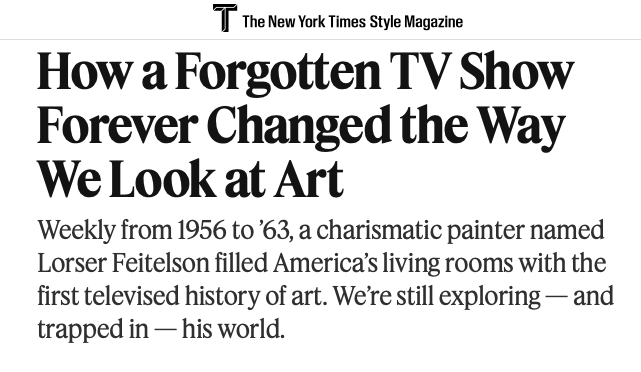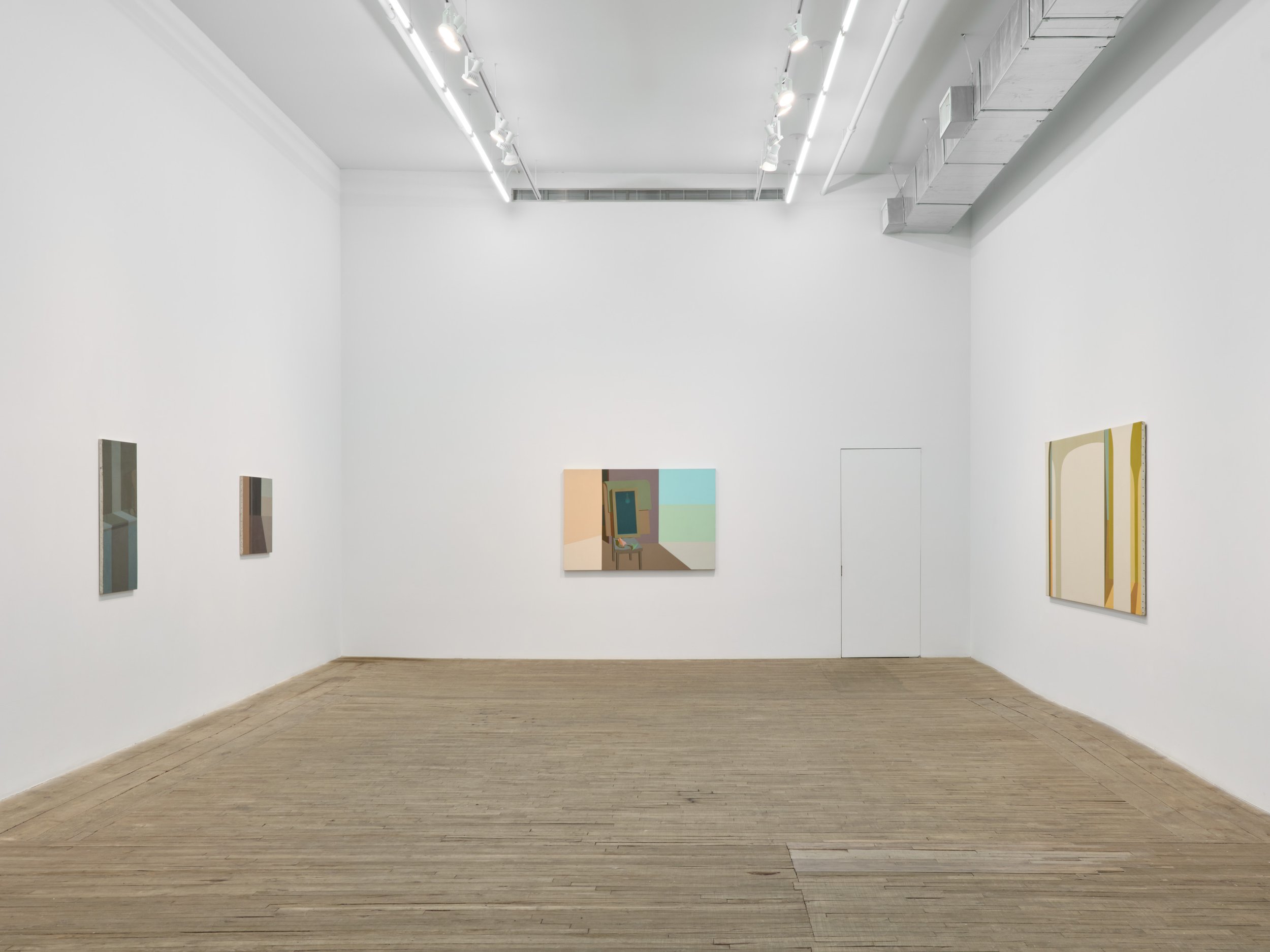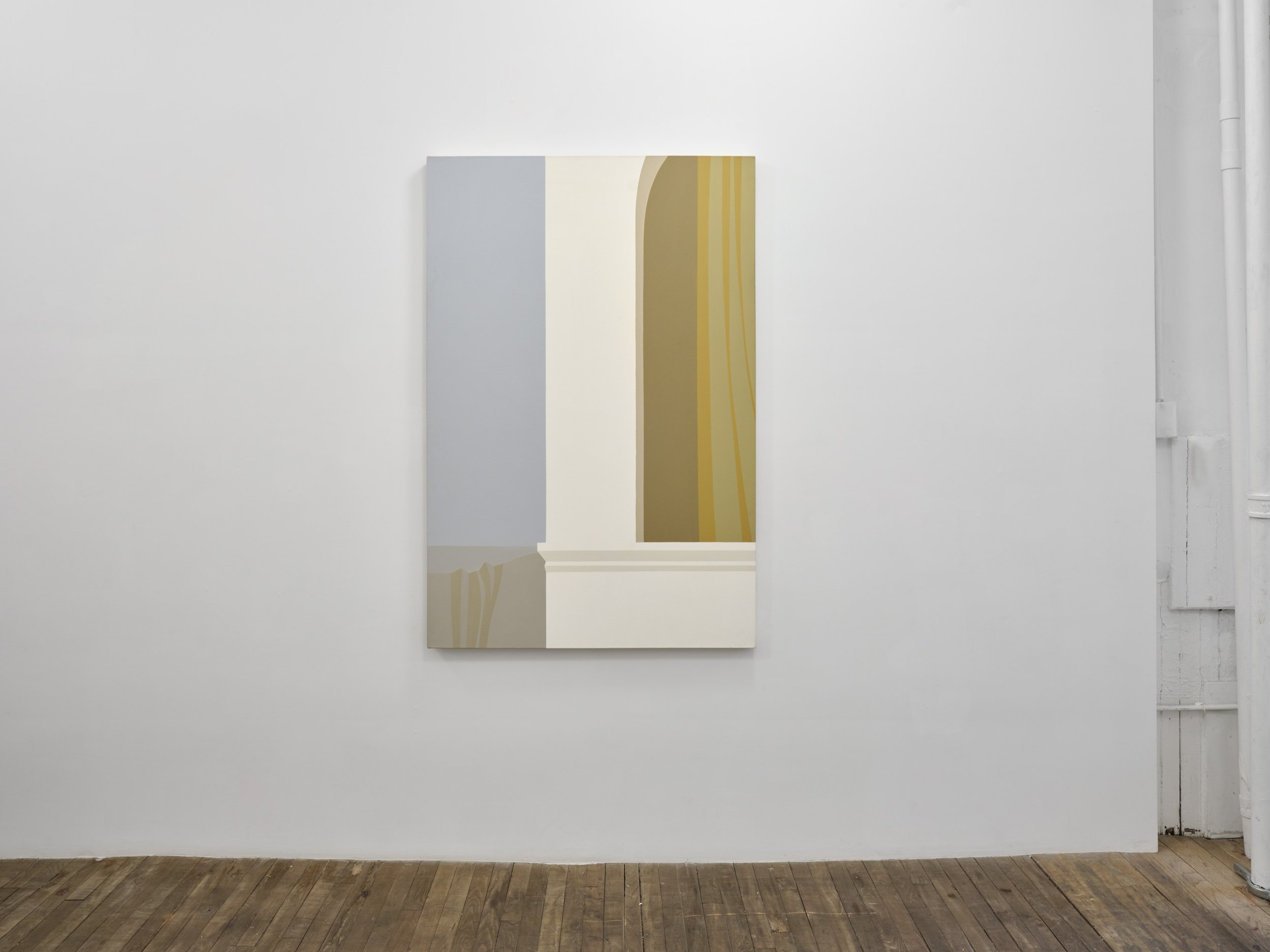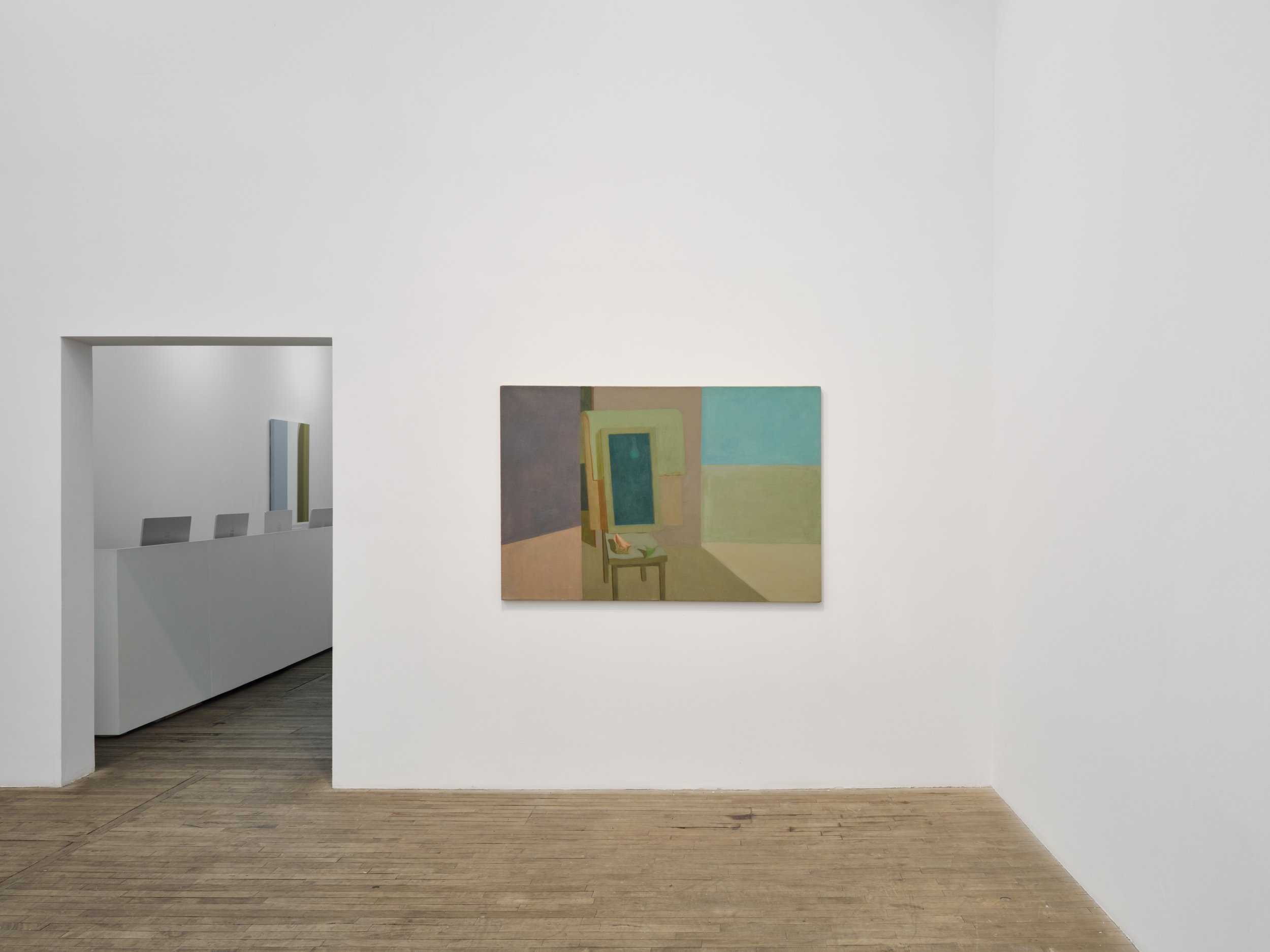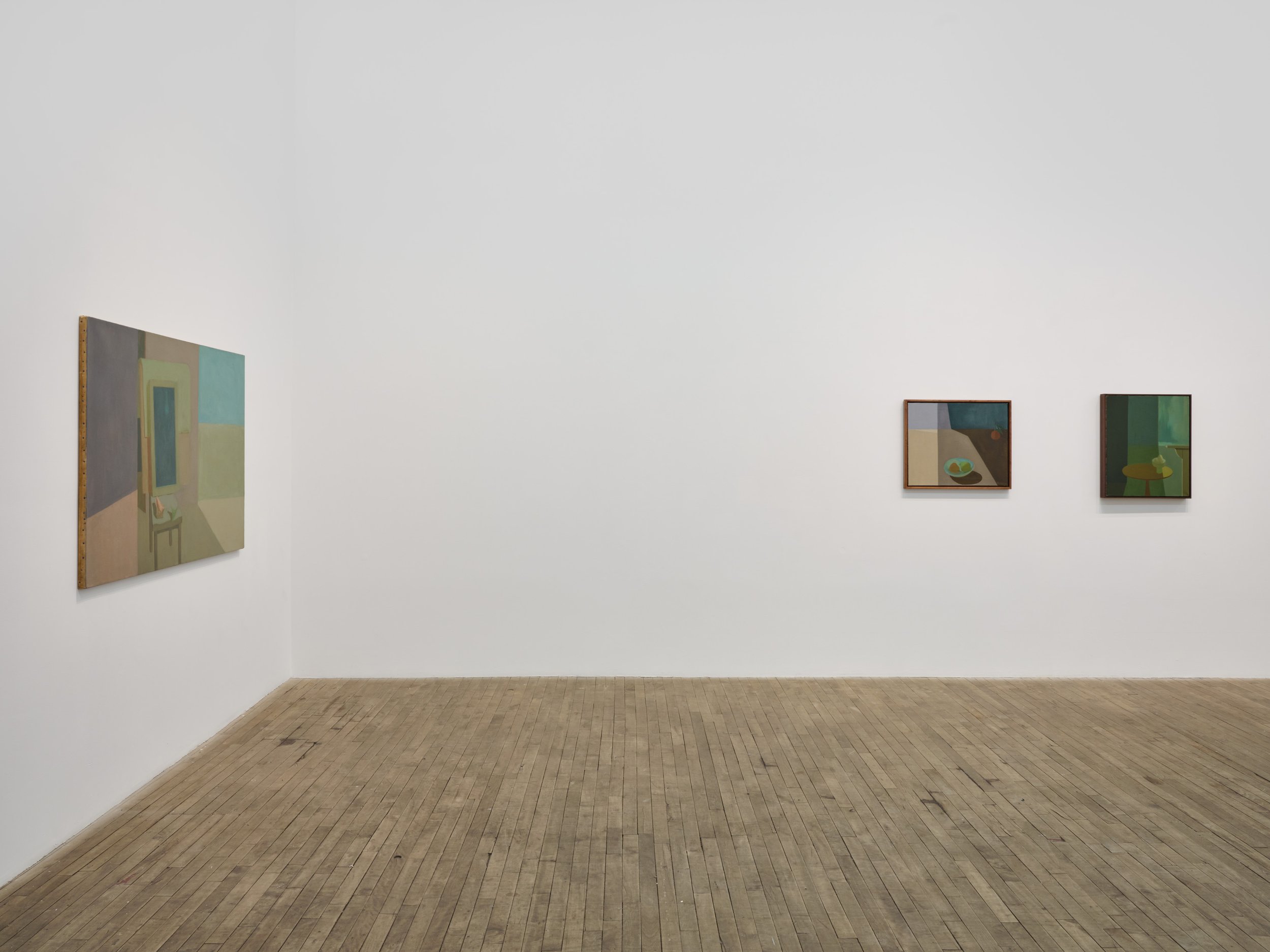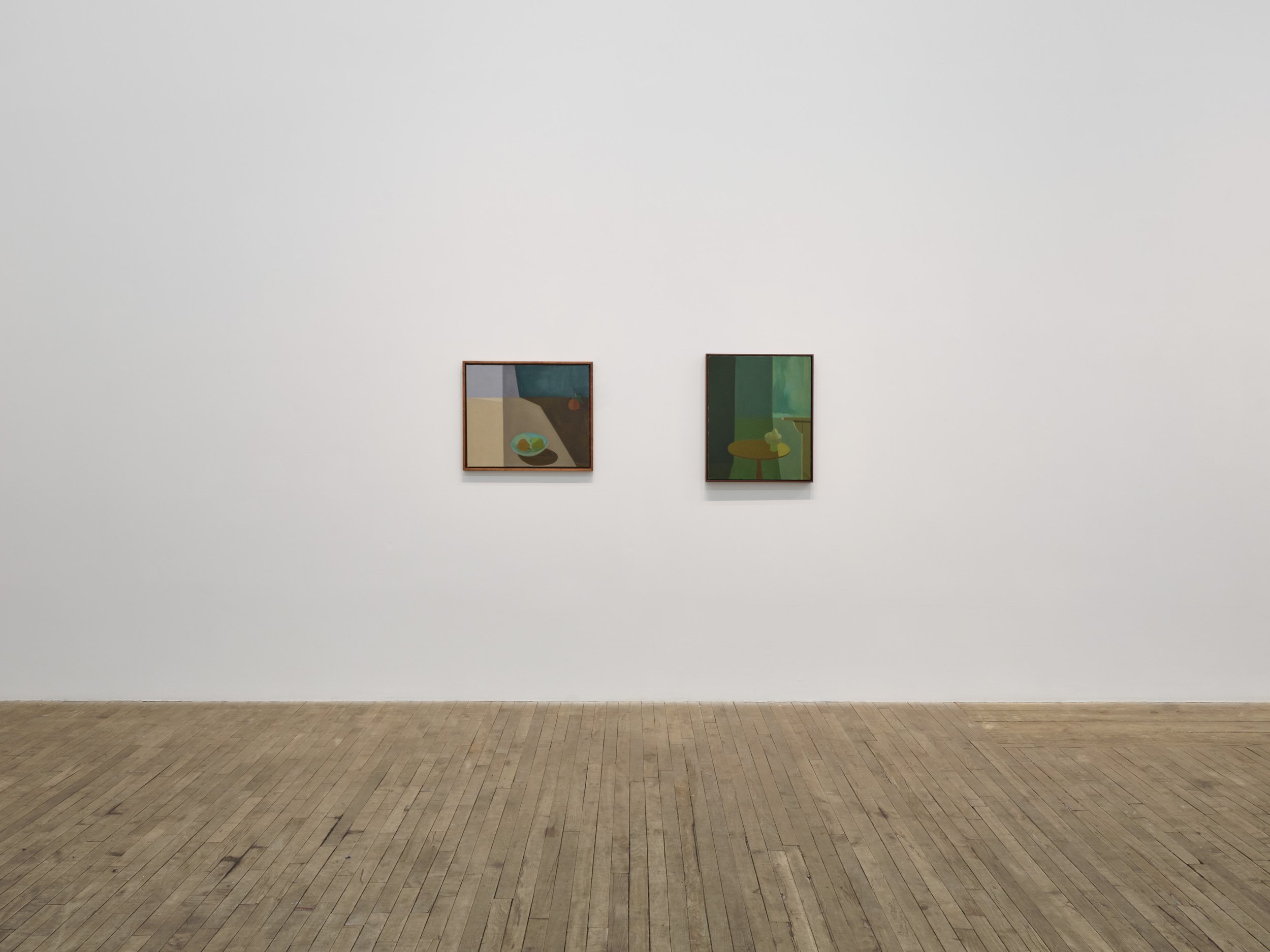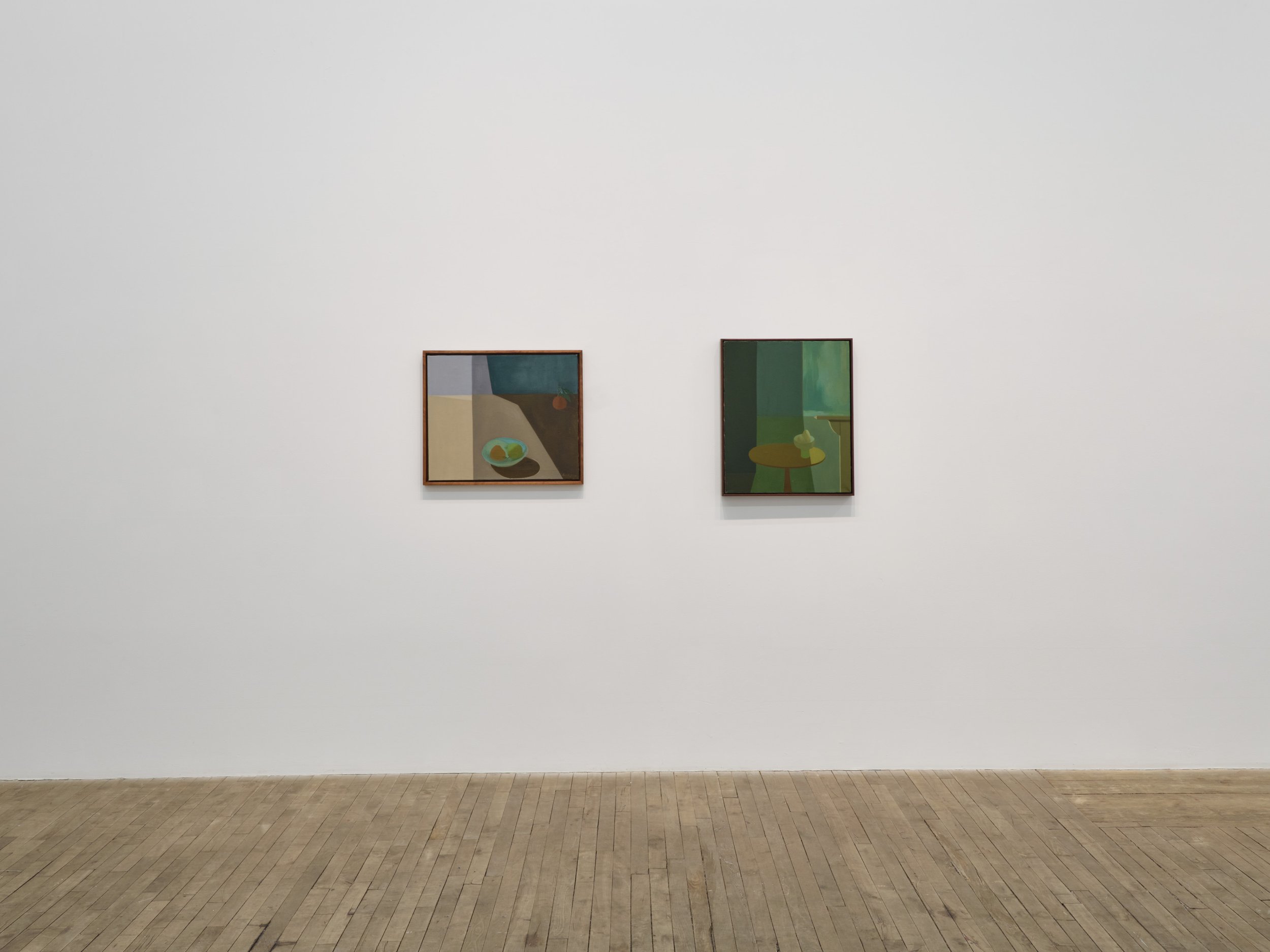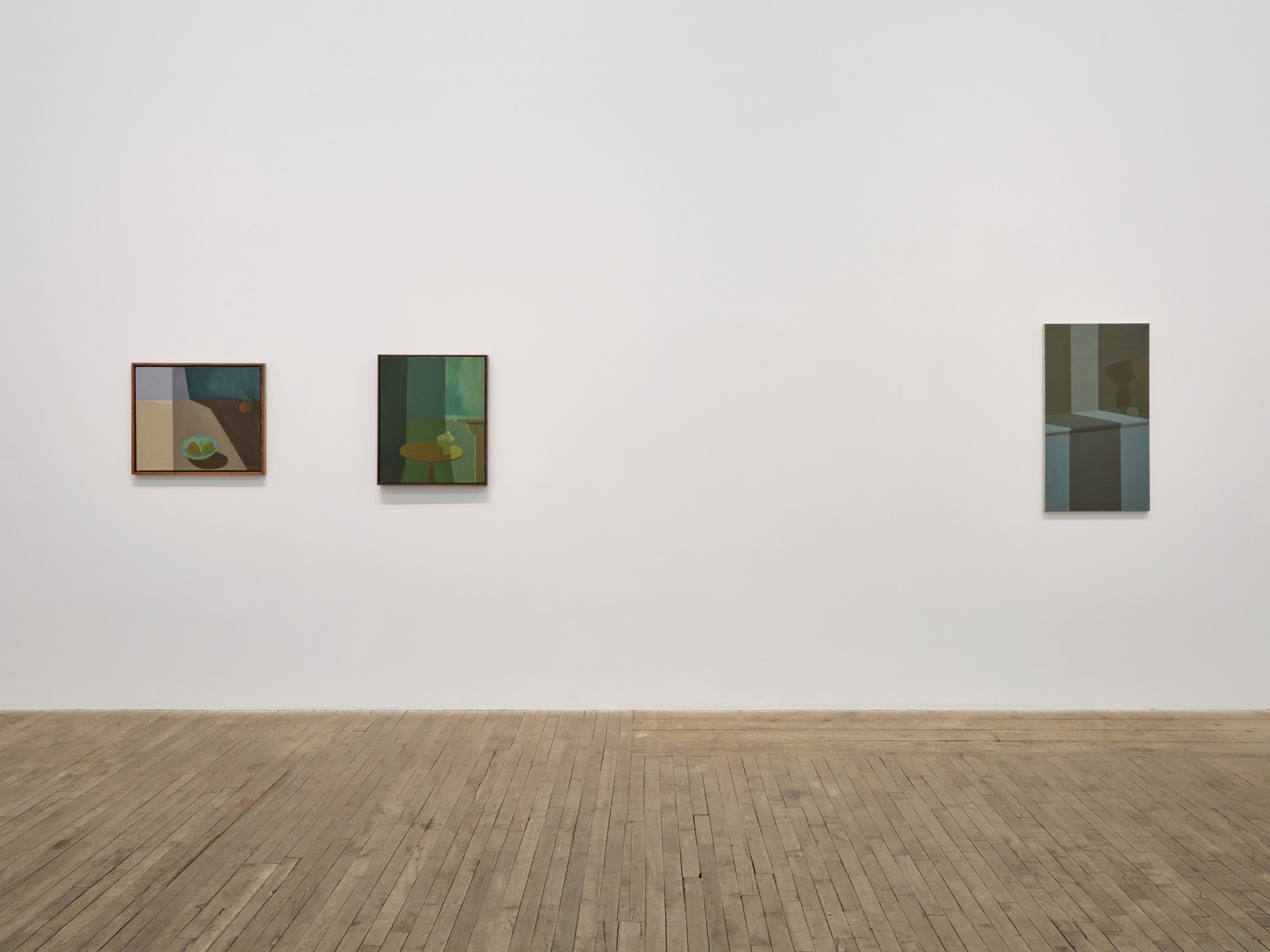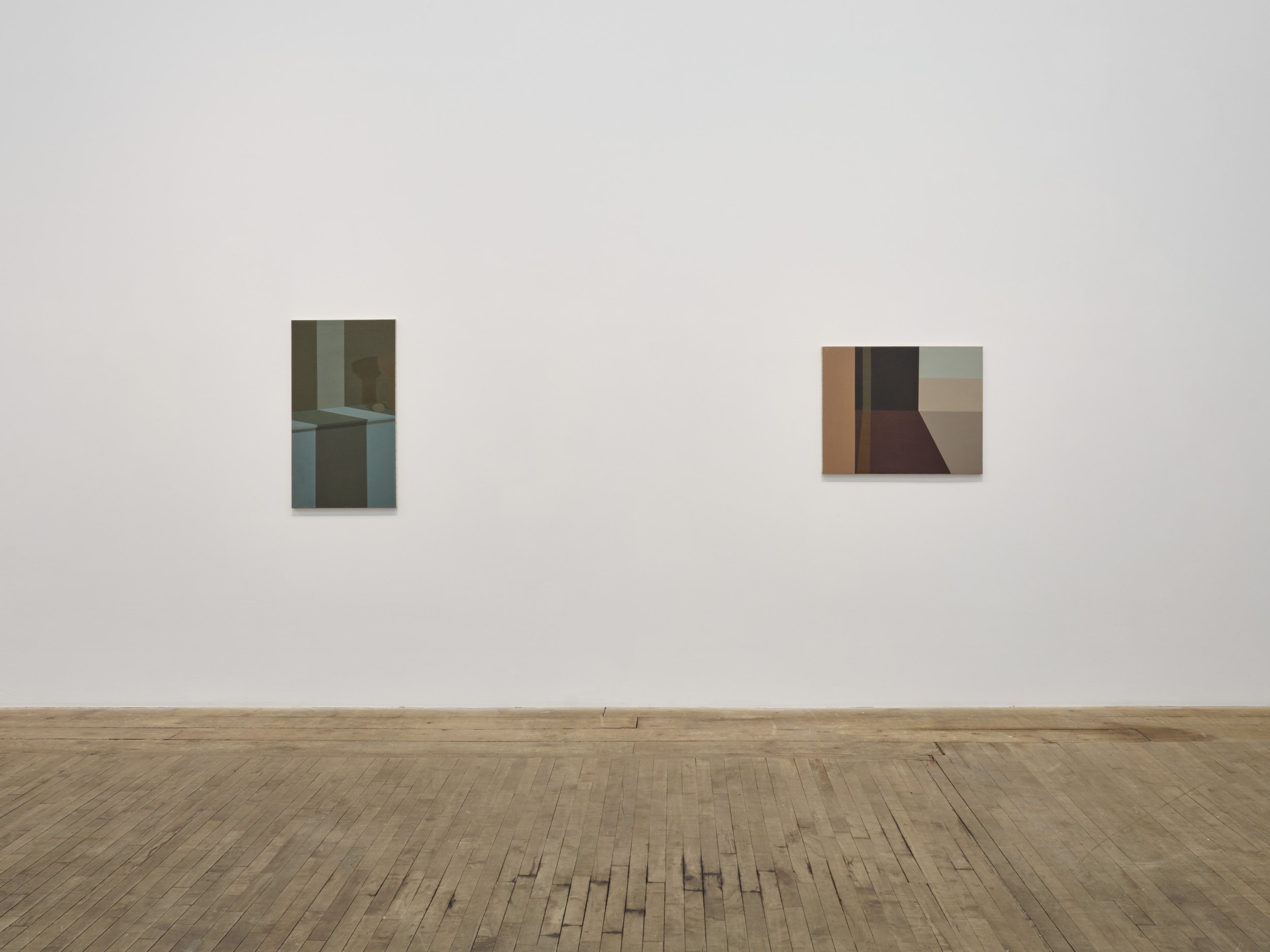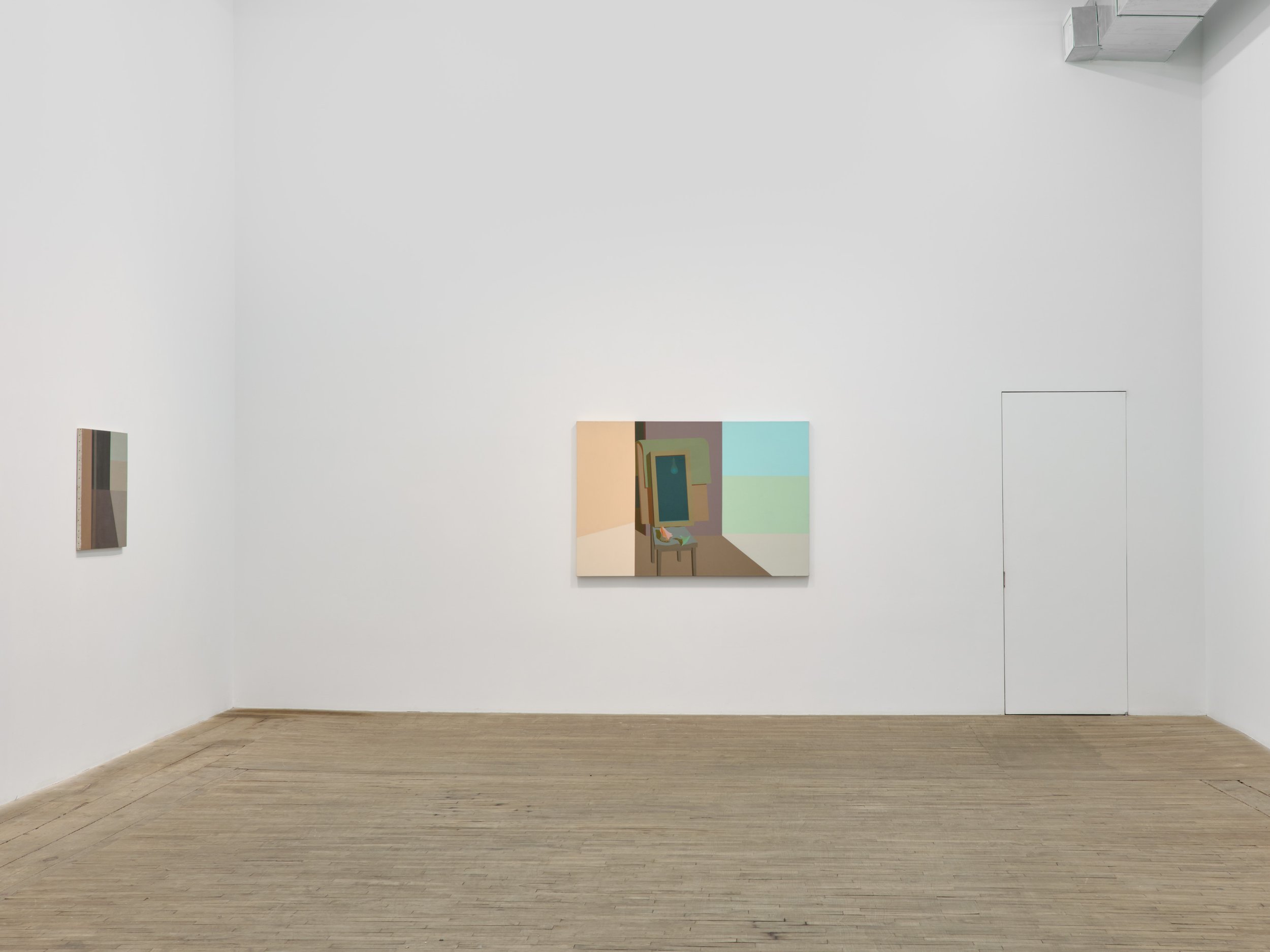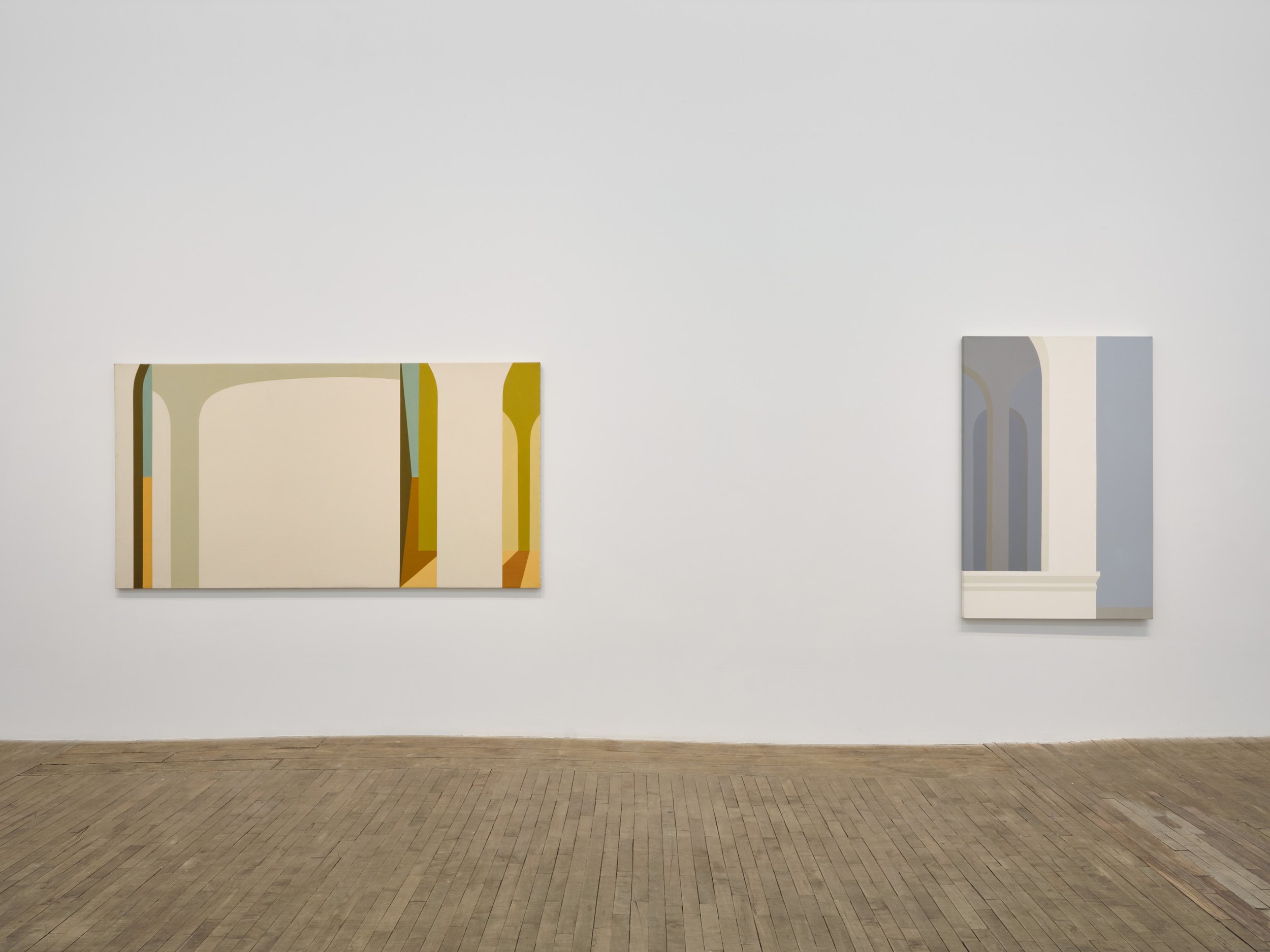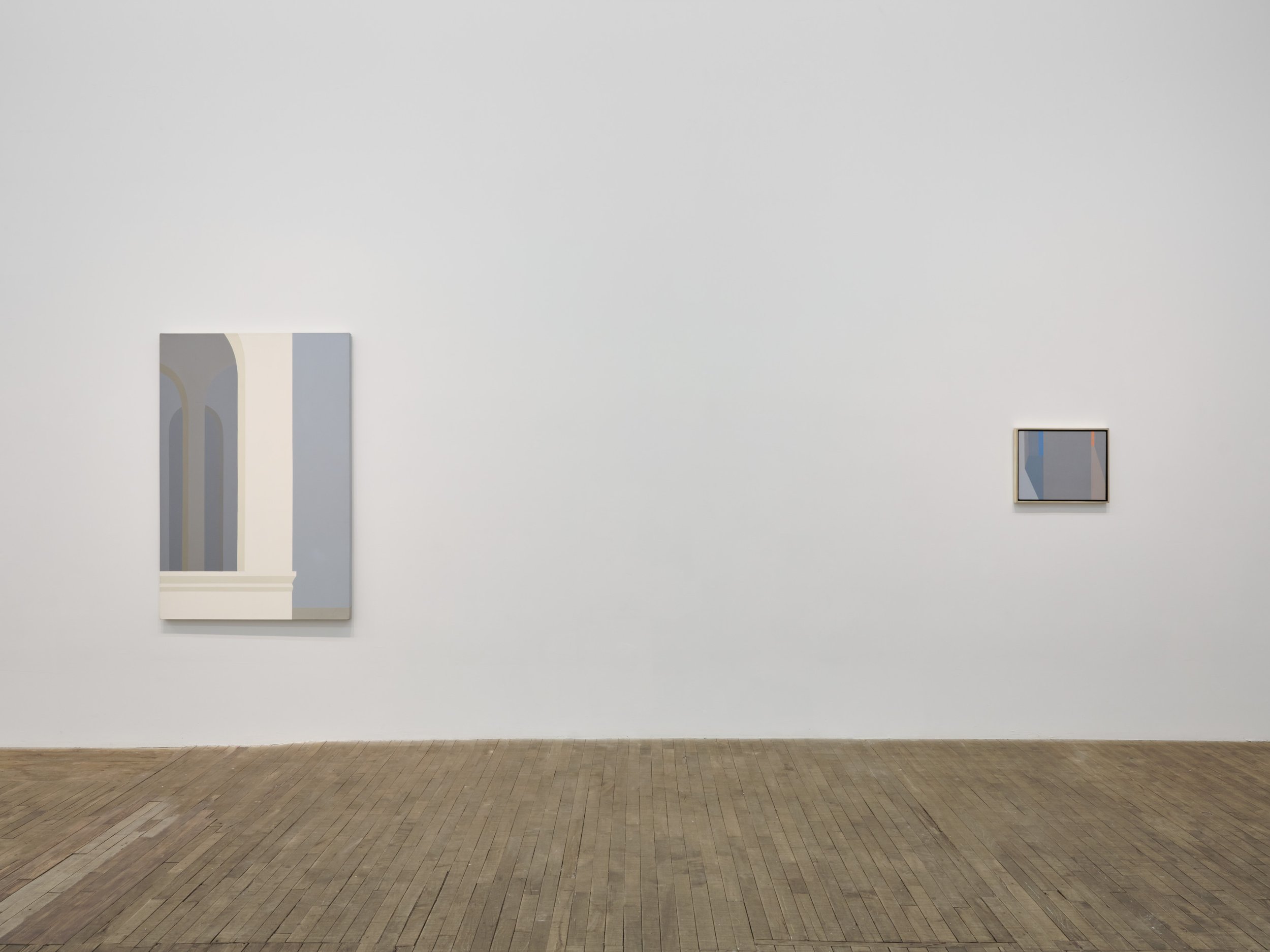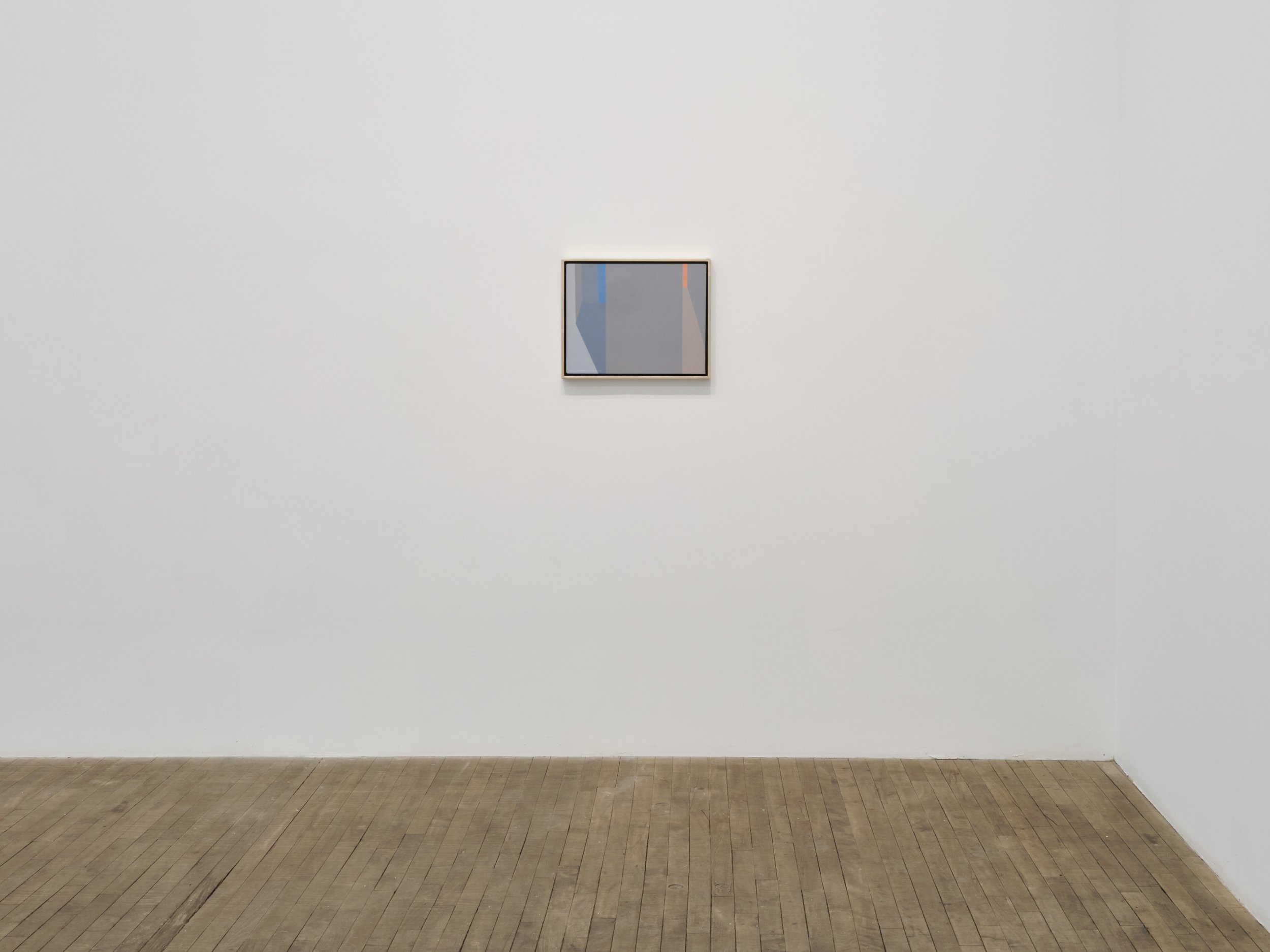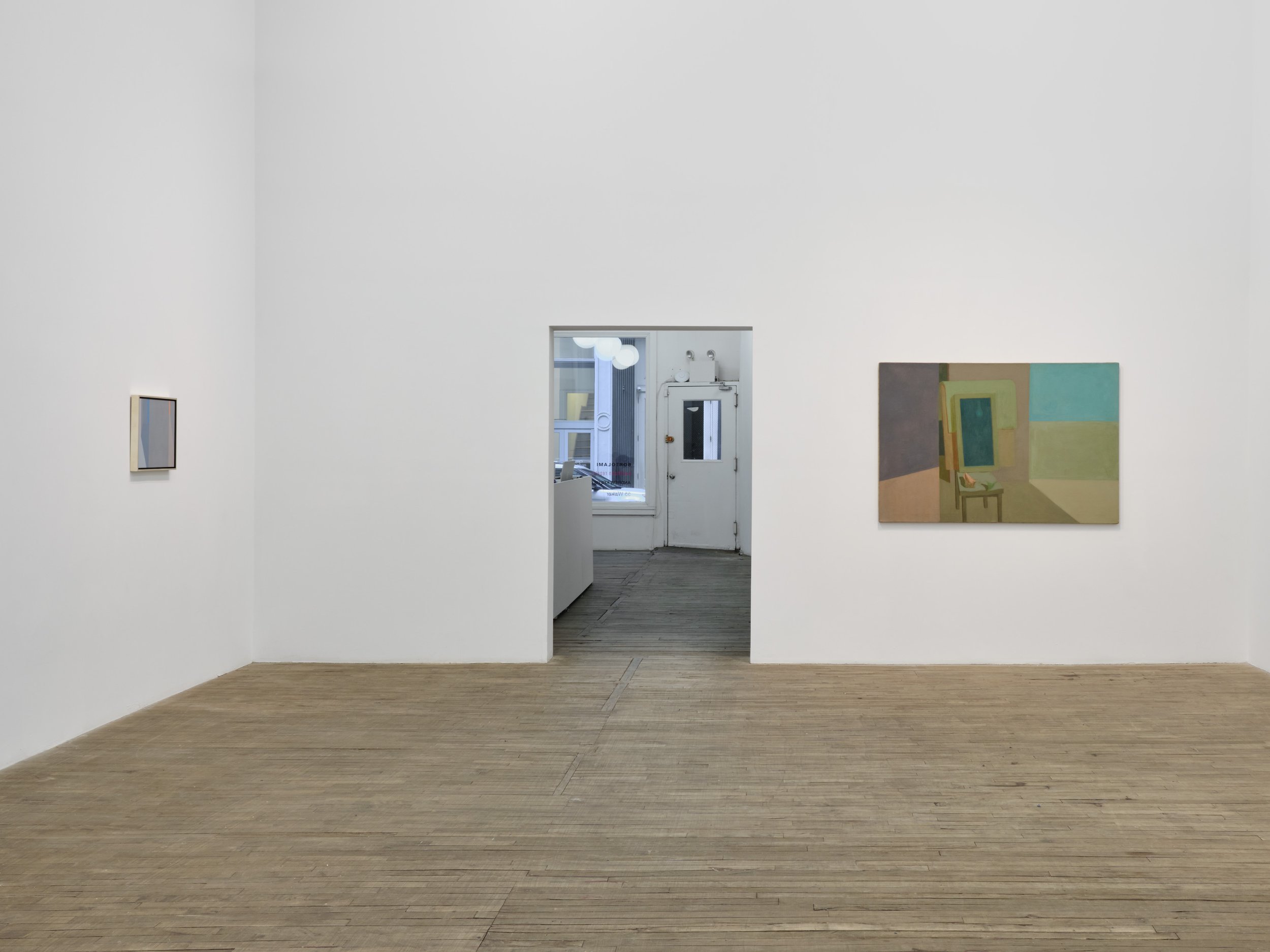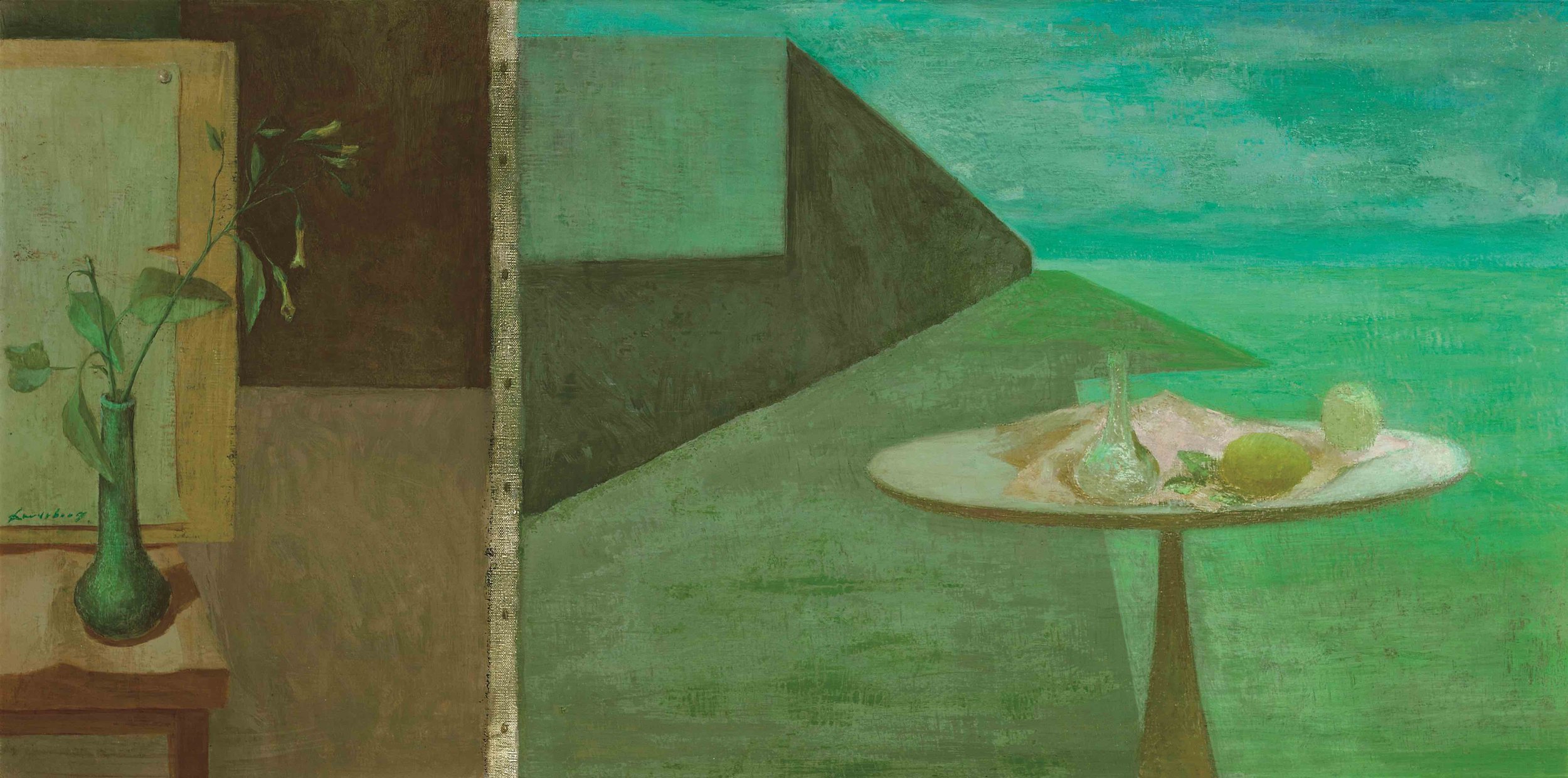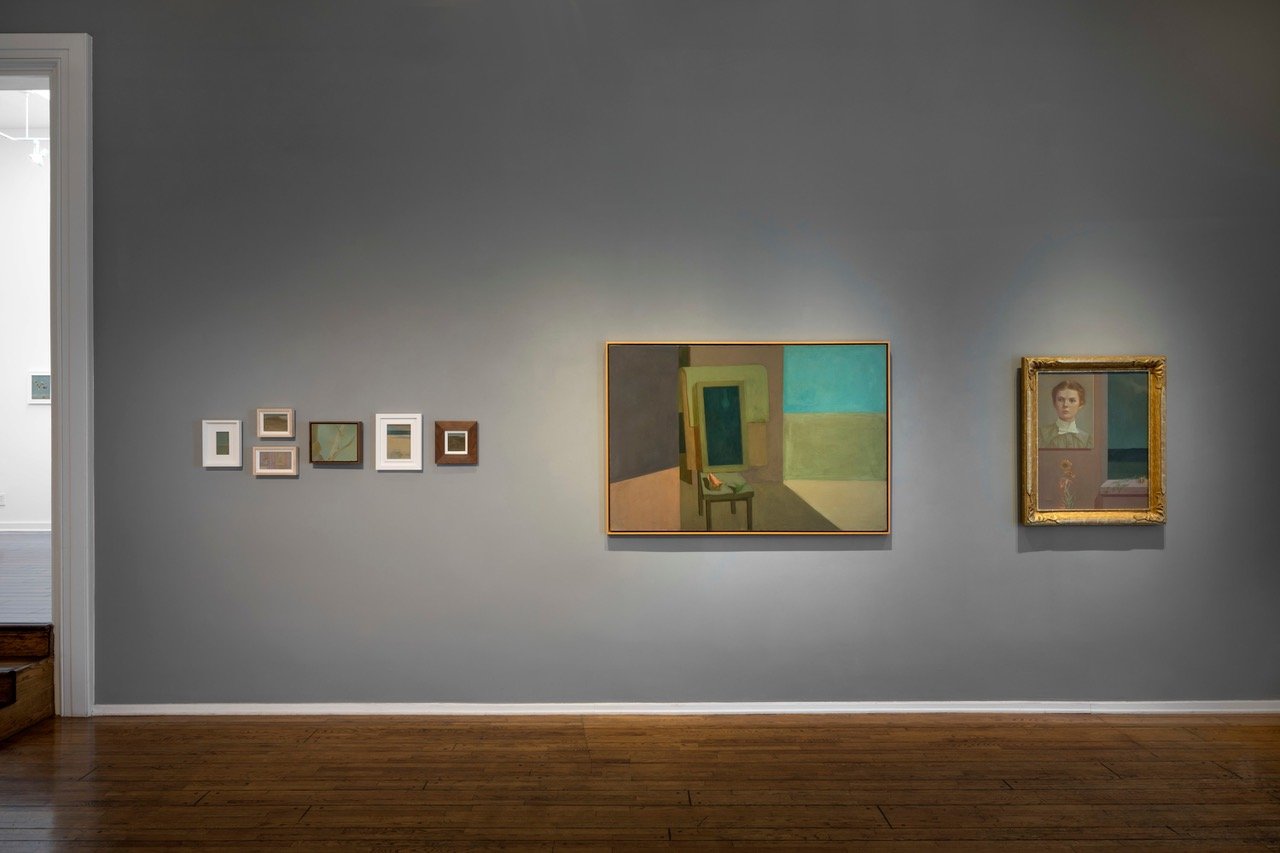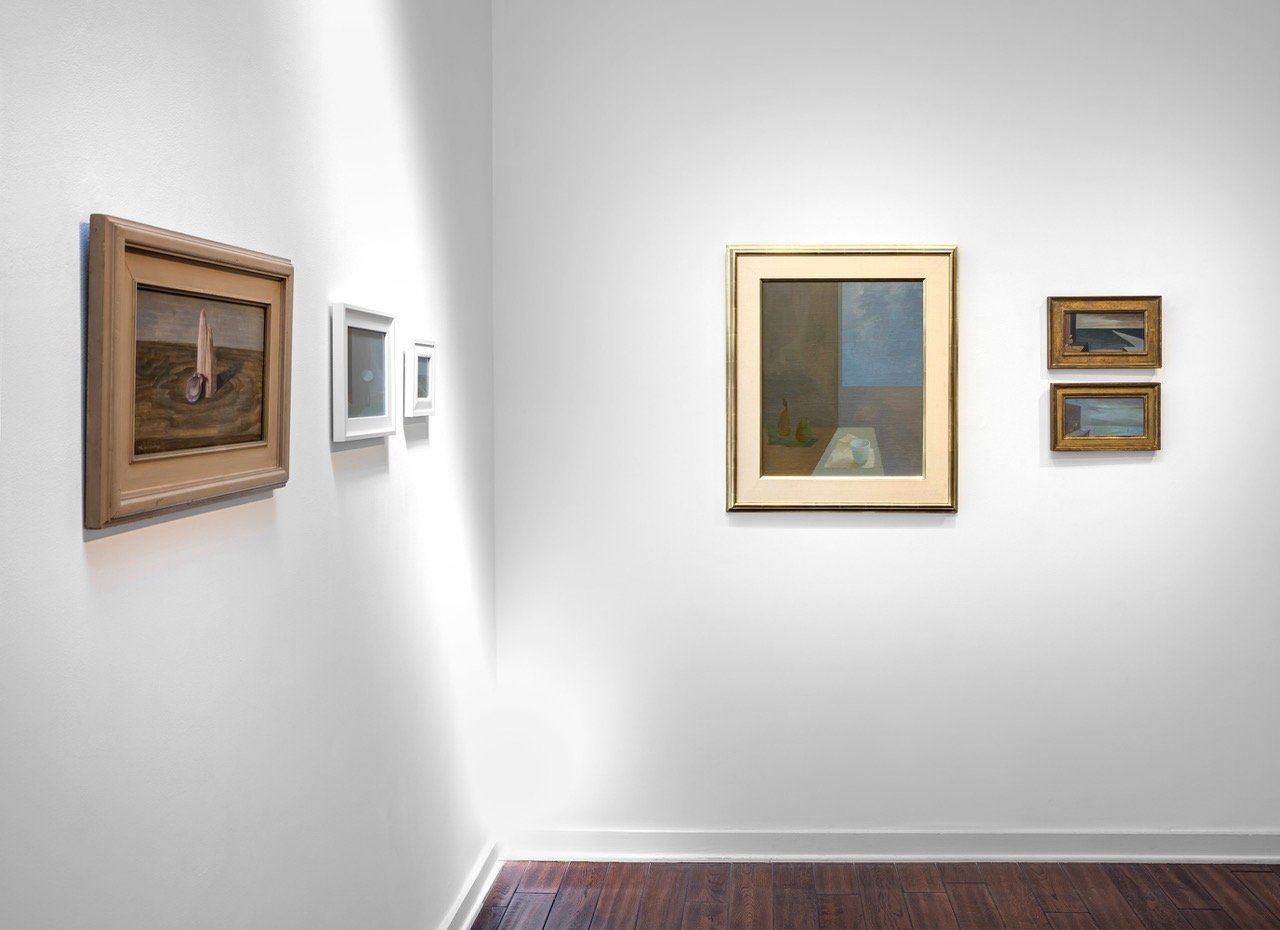Measuring 4 ½ by 5 ½ feet, Feitelson’s monumental composition, Love: Eternal Recurrence, was painted between 1935 and 1936 and first exhibited in the Post-Surrealist show at the Brooklyn Museum in 1936. Originally titled Perpetuity: Conjugation and Death, Feitelson later changed the title to Love: Eternal Recurrence in reference to Stoic and Nietzschean conceptions of the Eternal Return, a title which, according to Diane Moran, “expressed [Feitelson’s] own conviction that there must be eternal values in art.”[1] It was this sense of conviction that had inspired Lorser Feitelson and Helen Lundeberg to found the Post-Surrealist movement in 1934, a pictorial mode that Feitelson would explore in such works as his Love: Eternal Recurrence.
When exhibited alongside paintings by European surrealists, Feitelson’s Love: Eternal Recurrence may, at first glance, superficially evoke the illogical arrangements of objects and unconscious visions represented in the work of Salvador Dalí or Max Ernst. Unlike the European surrealists, however, whose capricious pictorial arrangements eschewed aesthetic unity to capture the inner workings of the human psyche, the Post-Surrealism of Lorser Feitelson looked beyond the transience of such psychic visions and up towards the cosmos, treating such universal themes as life, death, and genesis. “Post-surrealism is the antithesis of the introspective illustration of the popular expressionistic-Surrealists,” wrote Feitelson in 1941, “the graphic objectification of conscious and sub-conscious psychic meanderings in itself does not create art. Only when the introspective activities are integrated into an aesthetic pattern do they become legitimate elements of art.”[2] In Love: Eternal Recurrence, Feitelson creates such a unified artistic reflection on the cosmic themes of life, death, and genesis by assimilating a seemingly incongruous assortment of pictorial elements into a rationally ordered composition, a work of art capable of sustaining what Feitelson, like Immanuel Kant, termed the “universality of the aesthetic.”[3]
When examining the painting in the context of the present exhibition, we are prompted to pay special attention to Feitelson’s treatment of the human form. The muscular back of the faceless male nude, who contorts his body into a passionate embrace with his faceless female partner, twists in a dynamic spiral of movement that recalls Tintoretto’s swirling figures in such works as his Moses Drawing Water from the Rock and The Miracle at Manna in the Scuola Grande di San Rocco in Venice. The frenetic movement that is produced as the two bodies become intertwined in an erotic union, symbolizing the generative phase of the cosmic cycle, stands in stark contrast to the pictorial stasis exhibited by the pair of small figures in the bottom left quadrant of the painting, towards whom our eye is drawn by the pendulous hand of the faceless female figure. Like a quattrocento predella, the section at the base of an altarpiece containing small painted scenes related thematically, if not temporally, to the central pictorial narrative, this bottom section of the painting shows a man and a woman whose stillness, rendered with the quiet serenity of Fra Angelico, evokes the state of quiescence that precedes and ultimately follows the dynamic spark of the generative act. If the stillness of this small couple symbolizes the passive state of existence preceding the effervescent forces of love, passion, and procreation, then the infinite sequence of tombstones that recede into background of the composition stands for the return to stasis that awaits us all at the time of death. What lies beyond this phase of the cosmic cycle is beyond the reach of the human mind, a cognitive impasse symbolized by the foreshortened tomb marker that divides the terrestrial realm depicted in the left part of the composition from the realm of the cosmos represented to the right of the vertical barrier.
That such canonical pre-modern—dare one say “classical”—prototypes as Tintoretto and Fra Angelico may be detected in this work of Post-Surrealism should come as no surprise to those familiar with Feitelson’s oeuvre. Indeed, when the aesthetic principles that were to provide the basis for Post-Surrealism were first conceived by Feitelson and Lundeberg in the 1930s, the two artists originally christened their new artistic movement: “Subjective Classicism” or “New Classicism”. Even as artists in the nineteenth and twentieth centuries had consciously endeavored to break away from the classical tradition, the works of art on display in the Figural Variations exhibition reveal that the human figure has continued to endure into the twentieth and twenty-first centuries—both as a source of artistic creativity and as a timeless expression of the human experience: an eternal recurrence.
Figural Variations is on view at the Phoenix Art Museum until June 9, 2024. For more information, please visit the exhibition’s website: https://phxart.org/exhibition/figural-variations/
Jordan Hallmark, Researcher
June 20, 2022
[1] Moran’s monograph on Feitelson, appropriately enough, is entitled Lorser Feitelson: Eternal Recurrence. See Diane Moran, Lorser Feitelson: Eternal Recurrence (West Hollywood, CA: Louis Stern Fine Arts and the Feitelson/Lundeberg Art Foundation, 2014), 74.
[2] Lorser Feitelson, “What is Postsurrealism?,” Spanish Village Art Quarterly 1 (Spring 1941): 6.
[3] Ibid.




